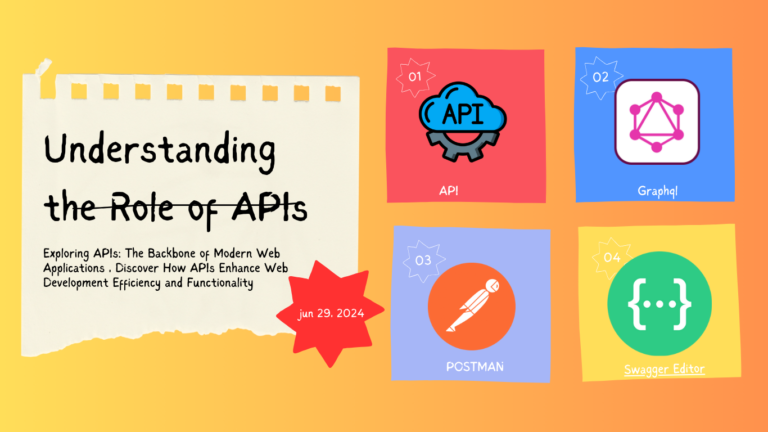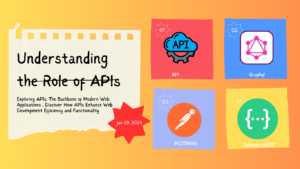
Exploring the practical importance of DSA for interviews, competitive coding, and solving real-world challenges.
Introduction:
In the fast-paced world of tech development, many wonder whether data structures and algorithms (DSA) are still relevant in 2024. The answer is a resounding yes. DSA not only forms the foundation of computer science but also remains a crucial skill set for technical interviews and competitive coding. Beyond cracking interviews, understanding DSA has real-world applications, from optimizing software performance to solving complex problems efficiently.
This blog dives deep into why mastering DSA is essential, how it’s used in everyday tech solutions, and the best resources to help you sharpen your DSA skills.
1. Why DSA Still Matters in 2024
Despite the rise of powerful programming frameworks and modern tools, the core of problem-solving in software development boils down to efficient algorithms and data management. Here’s why DSA is still relevant:
1.1. Interviews and Job Opportunities
Top tech companies such as Google, Amazon, and Facebook emphasize DSA in their technical interviews. Companies use coding challenges to evaluate a candidate’s problem-solving ability, analytical thinking, and understanding of computer science fundamentals.
- Example: In an interview, you might be asked to design an algorithm that finds the shortest path in a map. This problem involves Dijkstra’s Algorithm, a widely used graph traversal technique that efficiently computes the shortest path between nodes.
Understanding these concepts is crucial for succeeding in technical interviews, as they reflect a developer’s ability to think critically and solve problems under pressure.
1.2. Competitive Coding
For competitive programmers, DSA is the bread and butter of their skillset. Platforms like Codeforces, LeetCode, and HackerRank test contestants on algorithmic challenges, requiring deep knowledge of both basic and advanced DSA concepts.
- Example Challenge: You’re given a massive dataset of user transactions, and your task is to find the most frequent transaction in the shortest time possible. This requires using hash maps for constant-time lookups and counting, making DSA crucial for competitive coding success.
2. Real-World Applications of Data Structures and Algorithms
DSA isn’t just for cracking interviews — it powers some of the most impactful technologies today. Here are some real-world applications where DSA plays a pivotal role:
2.1. Web Search Engines
Search engines like Google use algorithms such as PageRank to rank web pages. This involves the use of graphs, sorting algorithms, and optimization techniques to deliver relevant results quickly. Graph traversal algorithms help determine the most influential nodes (web pages) in the web’s vast network.
- Example: When you search for a query on Google, algorithms parse through billions of web pages using optimized graph search techniques to return the most relevant results in milliseconds.
2.2. Social Media Platforms
Social networks like Facebook and Twitter rely on graph data structures to represent user relationships (friends, followers, etc.). Graph traversal algorithms help suggest friends or connect users based on mutual friends and interests.
- Example: When Facebook suggests “People You May Know,” it uses graph algorithms to find connections between users based on their network of friends and interactions.
2.3. Route Optimization
Ride-hailing apps like Uber and Lyft use Dijkstra’s and A* (A-star) algorithms for route planning and optimization. These algorithms find the shortest and fastest routes, taking into account real-time traffic conditions.
- Example: Every time you request an Uber, algorithms efficiently calculate the fastest route from your location to your destination by traversing a graph of roads and intersections.
2.4. Database Management
Hashing algorithms and balanced trees (e.g., AVL or Red-Black Trees) are used in databases to index data, allowing for fast insertions, deletions, and lookups.
- Example: When you query a database to retrieve user information, data structures like B-trees ensure that the search operation is optimized for speed, enabling efficient database performance even with millions of entries.
2.5. E-commerce Platforms
E-commerce platforms like Amazon use algorithms for inventory management, product recommendations, and customer segmentation. Sorting algorithms play a role in presenting products based on relevance, while machine learning algorithms make personalized recommendations using underlying DSA principles.
- Example: Amazon’s recommendation engine leverages algorithms like collaborative filtering, which can be built on top of graph and matrix data structures to identify similarities between users and products.
3. Essential Data Structures and Algorithms in 2024
As tech evolves, some algorithms and data structures remain foundational, while others gain prominence based on modern needs. Here’s what you should focus on:
3.1. Key Data Structures
- Arrays and Linked Lists: Understanding basic storage and traversal mechanisms.
- Hash Maps (Hash Tables): Fast lookups, often used for caching and search.
- Trees (Binary, AVL, B-Trees): Key for hierarchical data structures like file systems and databases.
- Graphs: Vital for representing networks like social connections, maps, and recommendation systems.
3.2. Key Algorithms
- Sorting Algorithms: Merge Sort, Quick Sort, and Bubble Sort for organizing data.
- Searching Algorithms: Binary Search for efficient element lookup.
- Graph Algorithms: BFS, DFS, Dijkstra’s Algorithm for network traversal and shortest path problems.
- Dynamic Programming: Optimizing problems by breaking them into overlapping subproblems (e.g., Knapsack Problem, Fibonacci).
4. Best Practices for Mastering DSA
DSA mastery requires consistent practice and a structured approach. Here are some tips to help:
4.1. Start with the Basics
Begin by understanding fundamental data structures like arrays, linked lists, stacks, and queues. Once comfortable, move on to more complex structures like trees, graphs, and hash maps.
4.2. Solve Real Problems
Practical application is key to learning. Platforms like LeetCode, HackerRank, and Codeforces provide problems ranging from beginner to advanced levels that simulate real-world use cases.
- Resource: LeetCode — Practice Coding Challenges
- Resource: HackerRank — Competitive Programming Challenges
4.3. Focus on Time and Space Complexity
Understanding Big O notation is essential for evaluating the efficiency of your algorithms. Practice analyzing time and space complexity to optimize solutions.
4.4. Consistent Practice
Make a habit of solving a few problems daily. Challenge yourself with varying difficulty levels to gradually improve your problem-solving skills.
4.5. Use Visual Learning Tools
Visualizing algorithms can aid in understanding complex processes. Websites like VisuAlgo provide interactive visualizations of how algorithms work step by step.
- Resource: VisuAlgo — Visualize Data Structures and Algorithms
5. What to Learn Next in 2024
As the landscape of programming and technology evolves, here are a few advanced topics that complement DSA knowledge in 2024:
5.1. Machine Learning Algorithms
Understanding the algorithms behind machine learning models (like decision trees, neural networks, and clustering algorithms) can open doors to data science and AI roles. These algorithms rely on mathematical optimization and data structures.
- Resource: Coursera — Machine Learning by Stanford
5.2. Parallel and Distributed Computing
With the rise of multi-core processors and distributed systems, learning how to design parallel algorithms and manage distributed data structures is becoming increasingly important for performance optimization.
- Resource: MIT OpenCourseWare — Distributed Algorithms
5.3. Quantum Computing Algorithms
Quantum computing is an emerging field, and understanding algorithms that can take advantage of quantum principles, such as Shor’s and Grover’s algorithms, is key to being at the forefront of technology.
- Resource: Qiskit — Quantum Computing Platform
Conclusion:
In 2024, data structures and algorithms remain the bedrock of software development. From passing technical interviews to solving real-world problems, DSA is essential for optimizing performance and improving your problem-solving abilities. With new technologies like machine learning, distributed computing, and quantum algorithms emerging, mastering DSA is just the beginning of your journey in modern computing.
Further Reading/Resources:
- Cracking the Coding Interview by Gayle Laakmann McDowell
- GeeksforGeeks — DSA Resources
- Coursera — Data Structures and Algorithms Specialization











